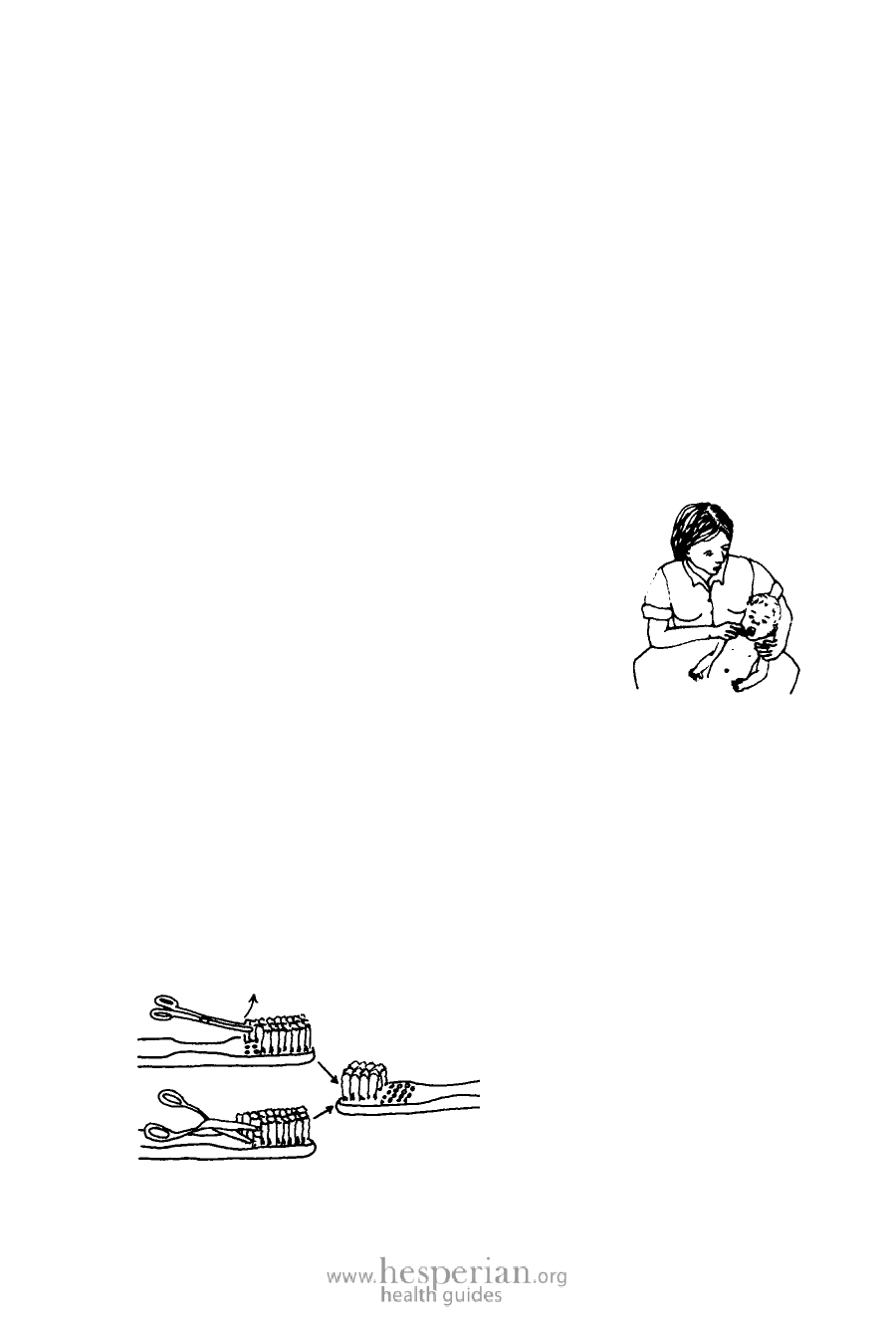
Where There Is No Dentist 2012 63
For baby teeth to grow strong, mother and baby must stay healthy.* Help
her to understand how important this is. A pregnant mother should:
• Eat enough good kinds of foods, both for herself and her baby growing
inside (page 68; also see Where There Is No Doctor, Chapter 11, and
Helping Health Workers Learn, pages 25-39 to 25-44.)
• Attend health clinic each month, so the health workers can examine her
regularly and she can receive important medicines (see Where There
Is No Doctor, page 250).
• Not use the medicine tetracycline, because it can cause the teeth
to turn dark. You, the health worker, must remember—do not give
tetracycline or doxycycline to a pregnant woman or to a young
child. If she needs an antibiotic, use a different one.
For baby teeth to stay strong, and to prevent marks from turning into
cavities, mother should:
• Continue to breastfeed and never feed her
child juice or sweet tea from a bottle. Start
giving soft foods, such as mashed banana or
papaya, when the child is 6 months old.
• Wipe her baby’s teeth with a clean cloth after
the baby eats. This cleans the baby’s teeth
and helps the baby get used to teeth cleaning.
Later he will be happy with a brush.
Around 1 year of age, there will be several baby teeth. At that time, mother
should start using water—not toothpaste—on a soft brush or brushstick.
(With toothpaste, you cannot see the child’s teeth clearly because of the
bubbles it makes.) She should scrub the sides and tops of each baby tooth
as well as she can (page 69).
The child can also try to clean his own teeth. That should be encouraged.
However, since he is too young to clean properly, mother (or father, or older
brother, sister) must clean his teeth once a day for him. Continue helping in
this way until the child is old enough to go to school.
You can make a large brush smaller,
to fit more easily into a young child’s
mouth.
Pull out some of the back hairs, or
cut them out with scissors. Do not
cut the hairs in half, because the tops
are often rounded or softer, and that
is better for the gums.
*See the story about pregnancy and dental care on pages 15–16.